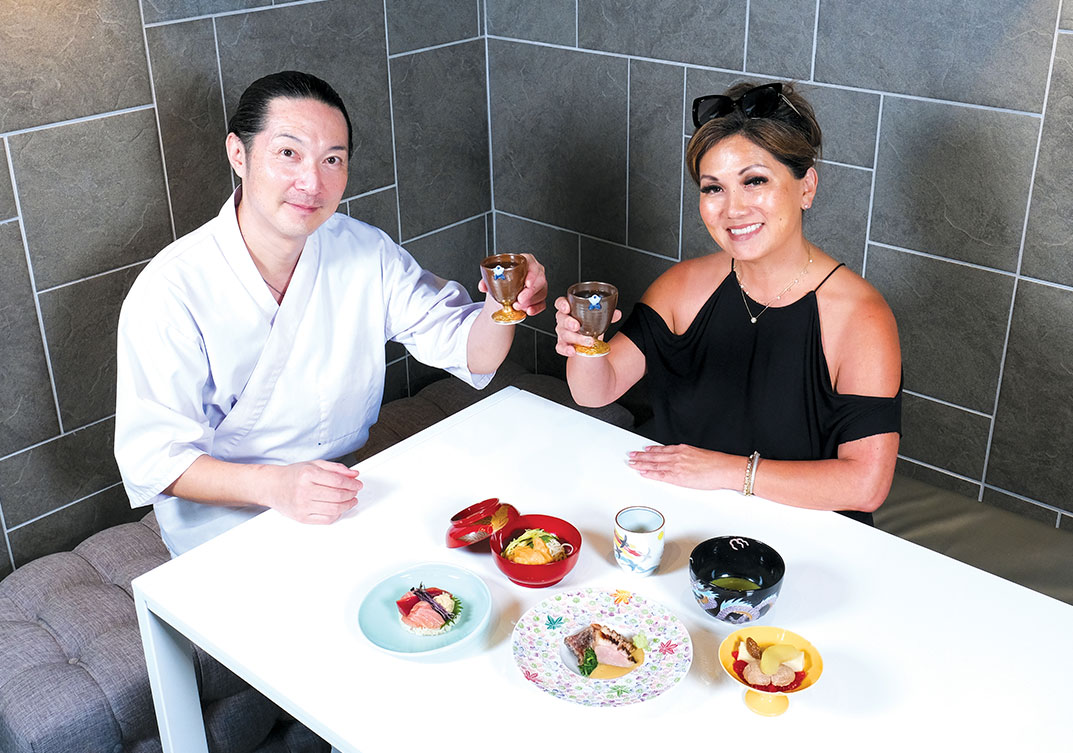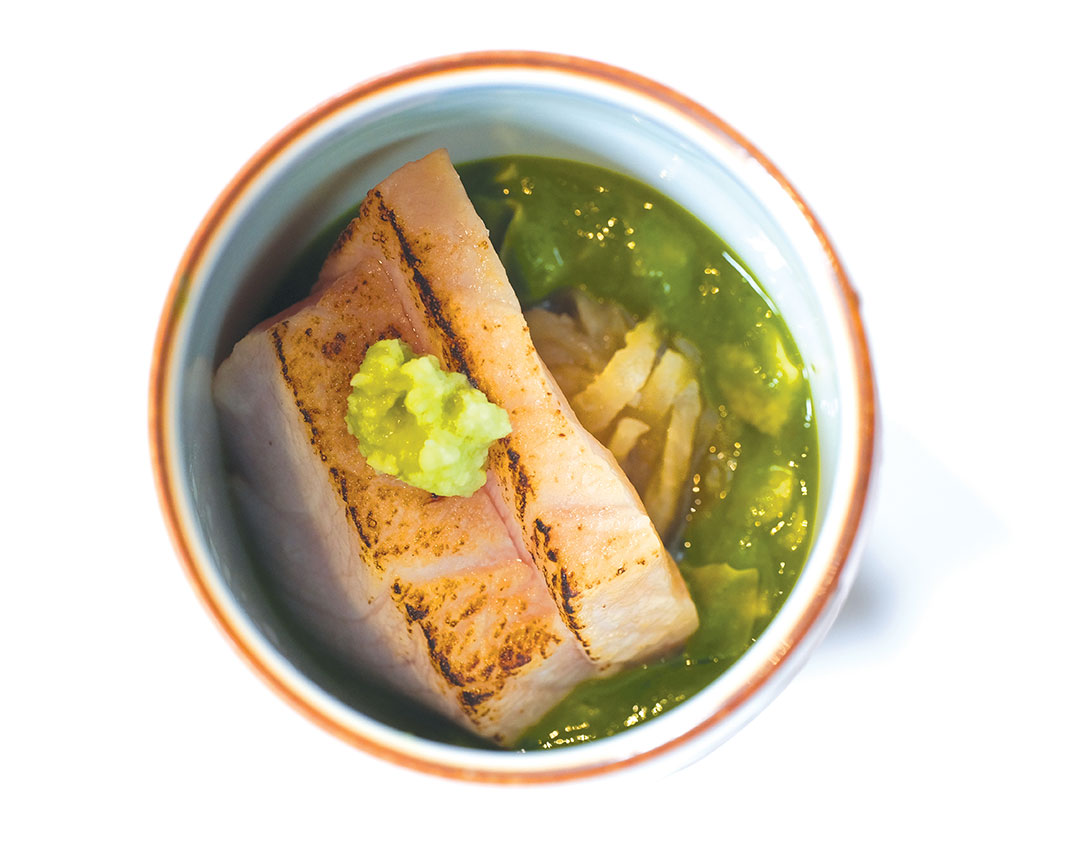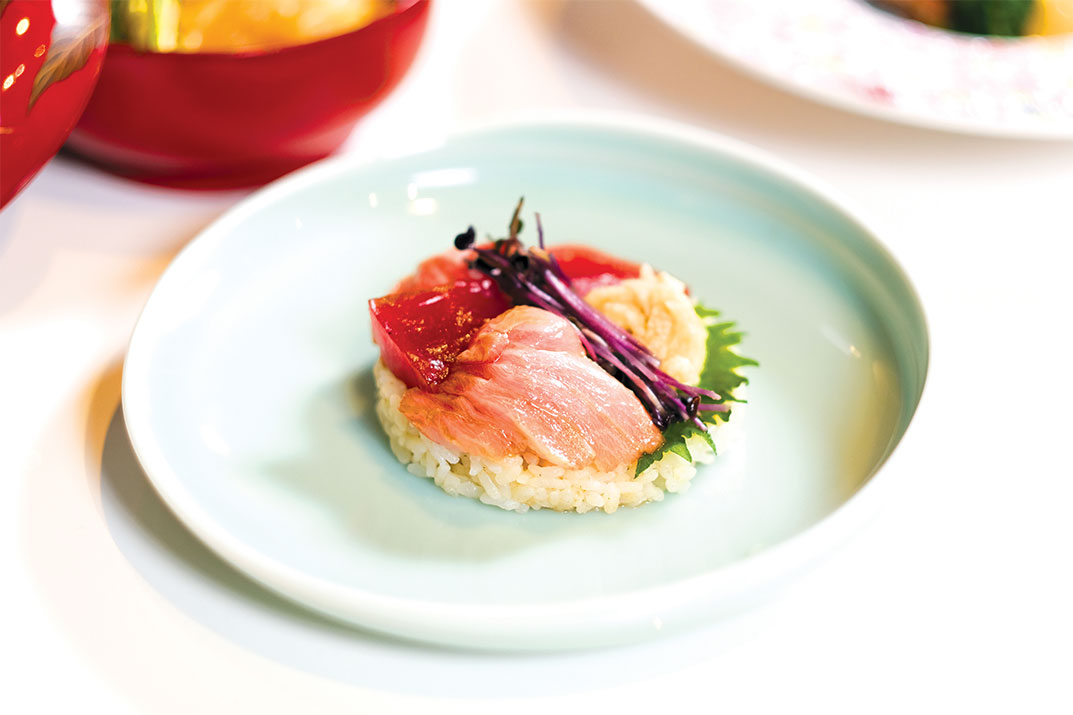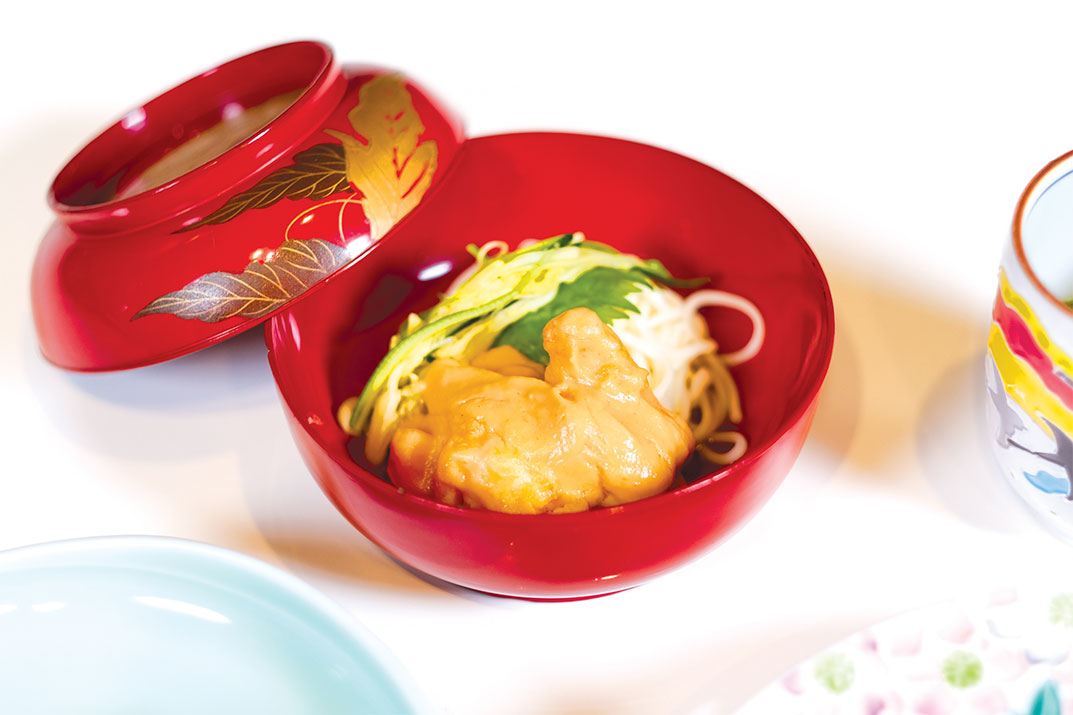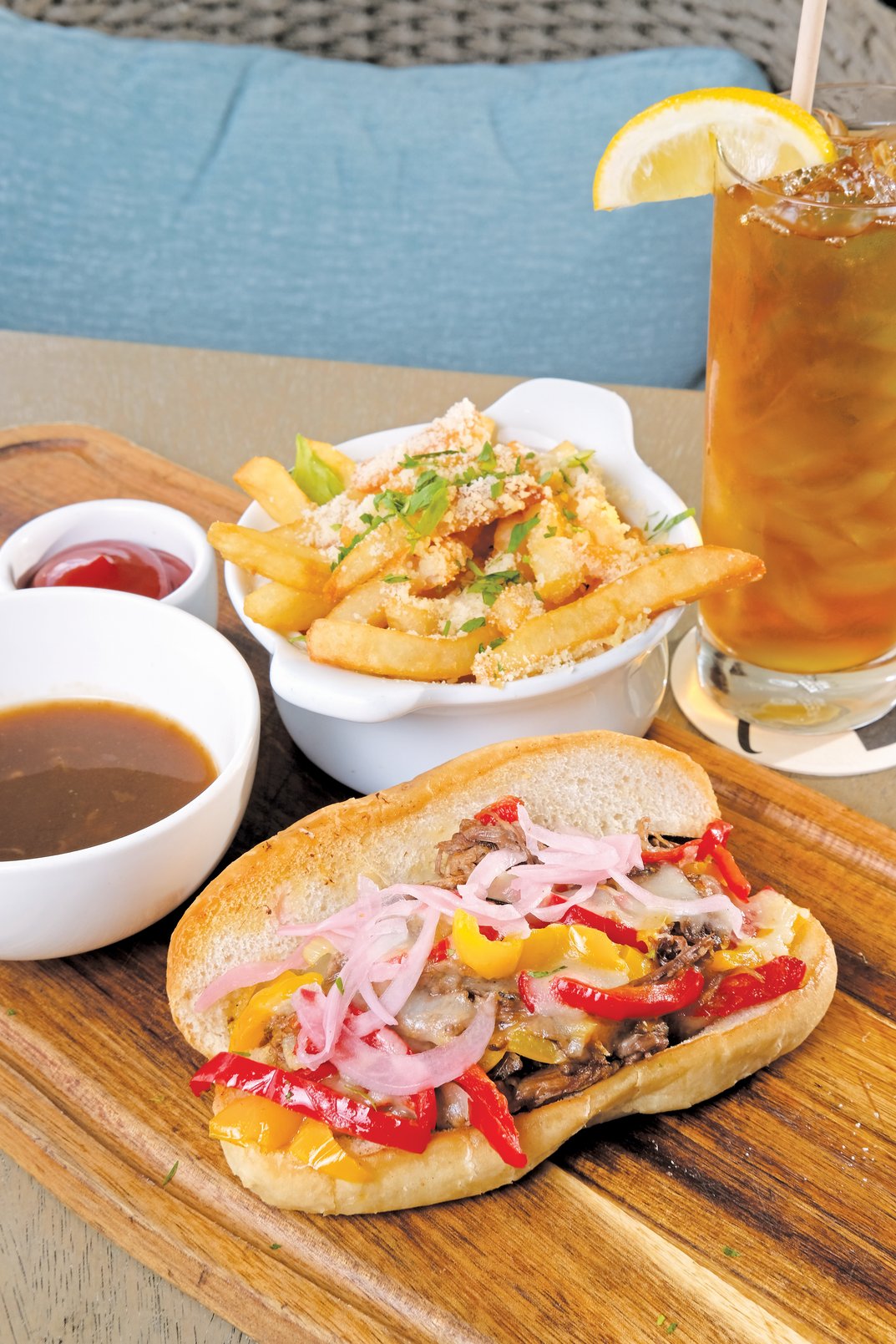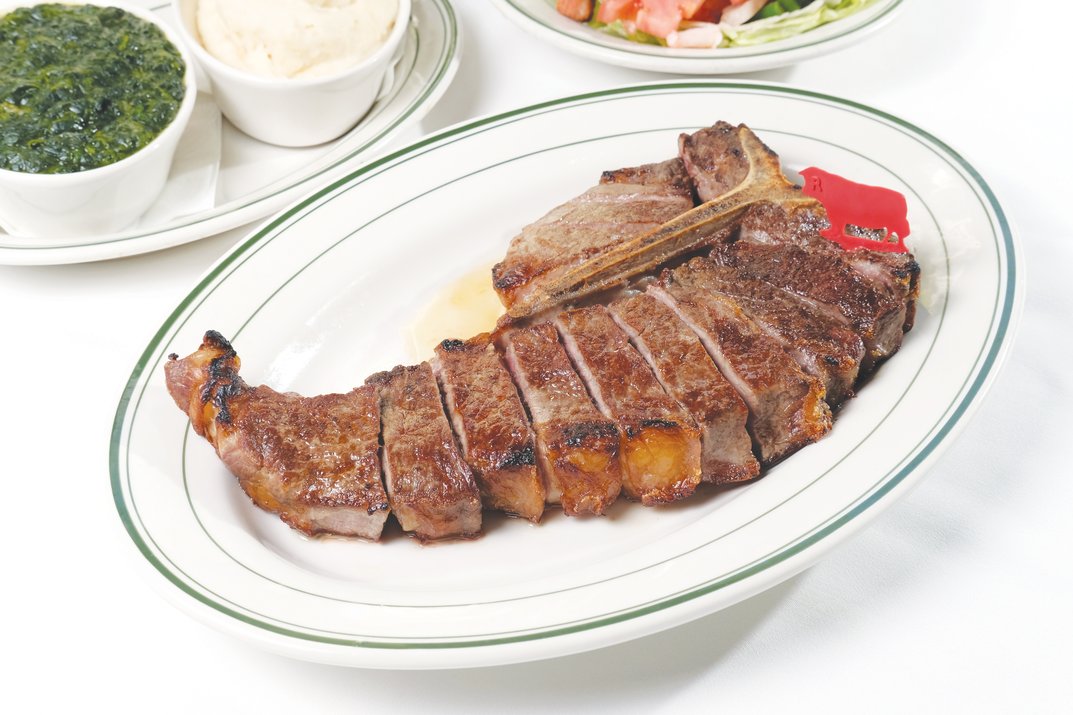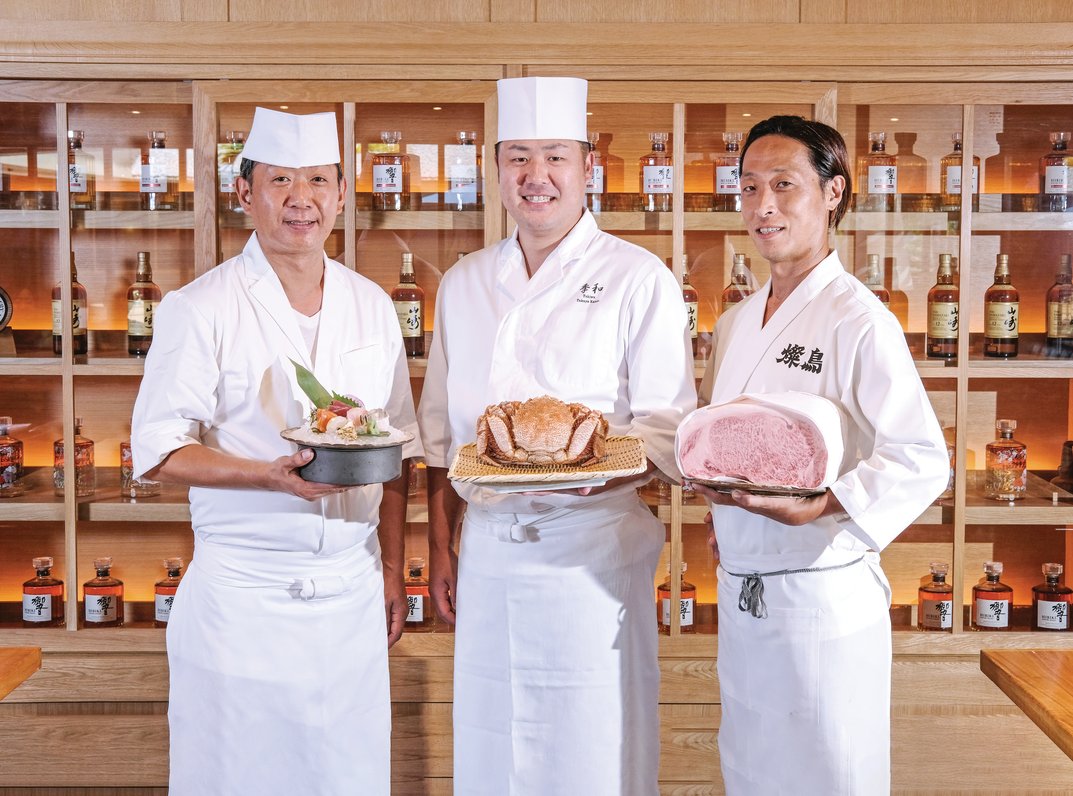Restaurant Insider with Anne Lee: NanZan Giro Giro
Restaurant InsiderJanuary 23, 2022
Story By: Anne Lee | Photos by: ANTHONY CONSILLIO
ANNE LEE speaks with owner/chef YOSHIHIRO MATSUMOTO
Owner/chef Yoshihiro Matsumoto first came to visit Hawaii in 2004 and it was love at first sight. He wanted to find a way to live and work here, and that dream became a reality when NanZan Giro Giro debuted in April 2011. This popular kaiseki restaurant was always busy and hard to get reservations for. I can understand why — every bite of each course has intention with a modern take on kaiseki and fresh local flavors. Chef Yoshi prepared some highlights of his January nine-course winter menu, and each dish took me on a flavor-filled journey.
AL: Explain the experience that you want guests to have when dining here.
YM: NanZan Giro Giro is a Kyoto kaiseki restaurant with a monthly changing tasting menu, where I prepare specific courses that I would like guests to try based on the season and emphasize the flavors without heavy seasoning. Either nine or six courses are available, and each dish I prepare is a performance of how I use local ingredients and keep the traditional Kyoto kaiseki-style, but I add a modern twist to enhance the flavors of each ingredient. I do import seasonal fish and seasonal ingredients from Japan, but 60-70% is local ingredients in my monthly menus.
AL: What is the meaning of Giro Giro?
YM: “Gi” is my mentor’s last name and “Ro” represents Rosanjin, a very famous ceramic artist, who we have tremendous respect for. This may sound funny for a restaurant name, but many customers tell me they remember it. NanZan is the ceramist that creates unique dishware that we use and have shipped from Kyoto.
These one-of-a-kind pieces are available for purchase, depending on the time of the year. Not many people understand the history of traditional Kyoto with the ceramic pieces and the cuisine I create, so I want guests to be able to understand. When I do have local older Japanese guests, they understand and can appreciate the seasonal flavors.
AL: The ceramic cups that we are toasting the sake with, why is the little boy hanging on the edge peeking in?
YM: The little boy, aka ikan jin, is there to relax and enjoy. He wants to make sure you are having a good time.
AL: What courses did you prepare today?
YM: I selected some of the key items from our nine-course menu, which is $143, and includes a starter to dessert. I also offer the six-course menu for $78, and you can add dessert for an additional $15.
The starter is my signature. Every month I will use the same dishware but the course change.We start with a seared buri yellowtail, which is usually very fatty and big in the winter in Japan. We cook with dry radish to make it modern, yuba soy milk paper for some sweetness and the kale soup with wasabi to bring some bitterness.
Then, we would have the soup course, which is black cod, cod soft roe, ankake soup, water chestnuts with green onion sauce. The next is Mukoduke course, which is beef prepared with mustard seed sweet soy sauce, walnuts, egg tofu, shiso, abalone and daikon pickled with kobu. The Oshinogi course means in between a carb/rice course and provides you rest before the next course. This is a Japanese bluefin tuna, wasabi, yamaimo radish sprout in vinegar soy sauce, pickles, shiso and gobo burdock roots on vinegar rice. The main is salmon — it’s a balance of winter flavors and features salmon roe, renkon lotus root purée, Kyoto white miso soup, salmon yuan grill, sesame tofu and more. The two mains following are lobster and duck. I try to have lobster and duck on the menu every month. The first main is lobster minuses out the lobster bisque with the hiyamugi noodle and zucchini pickles, which balance out this course. The second main is duck because it’s the new year. It’s prepared with layers, unagi eel and foie gras sauce. Following is the soup and rice course, Japanese sawara ono fish — which gets fattier and bigger in the winter, not oily — broth, mitsuba, bubu arare and heart of palm rice. The pickles course is like a banchan side dish that I have on the menu consistently every month. It features hakusai cabbage, ume purée, cucumber nukaduke and wasabi. Dessert is brown sugar azuki ice, fig jam and custard with raspberry lemonade jelly and an apple purée with a side of matcha green tea to drink.
AL: Anything else you want to share?
YM: Our February menu will have a feeling of love. We have a good selection of sakes, wines, etc. And don’t forget to make reservations.





